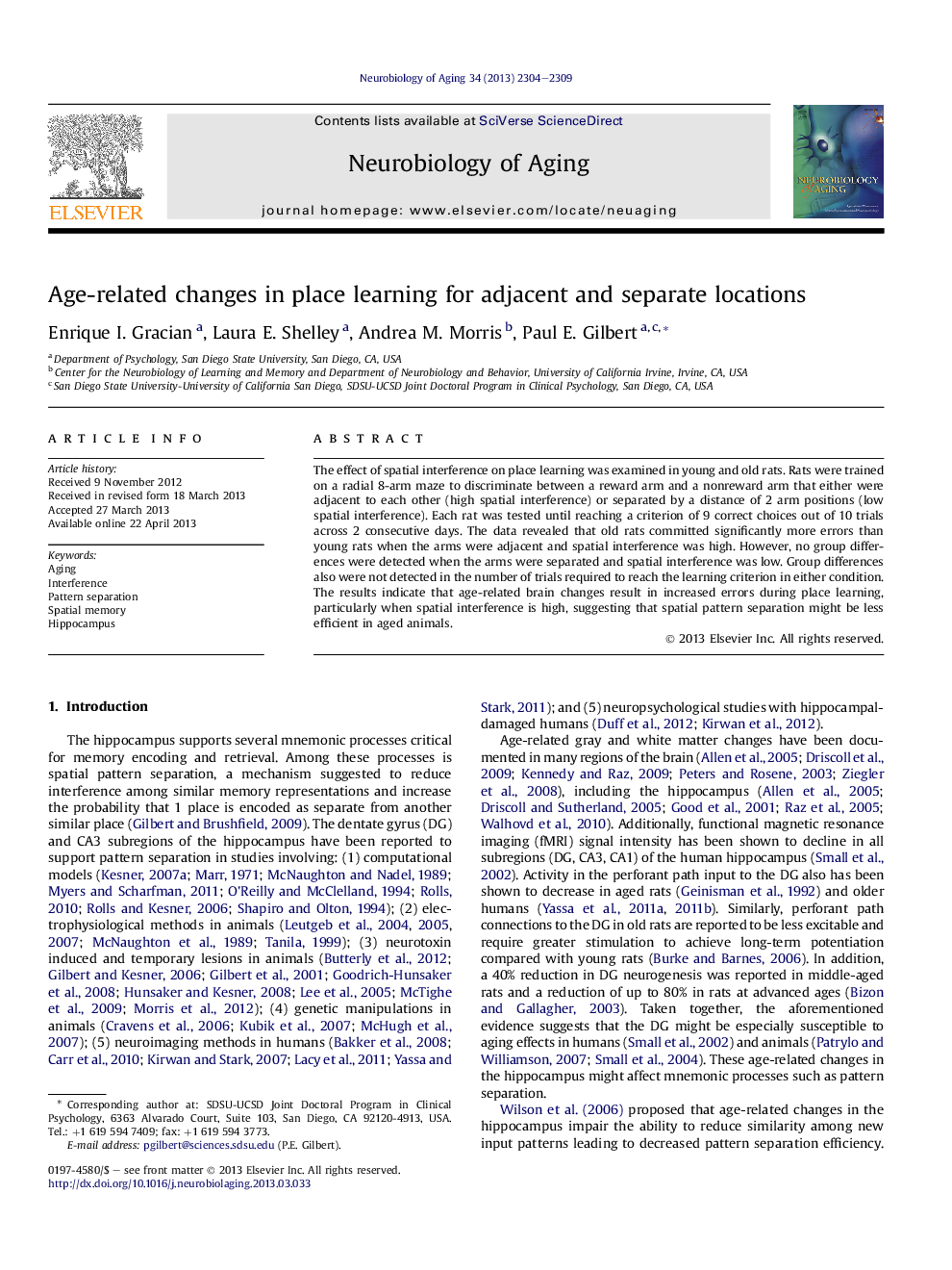| Article ID | Journal | Published Year | Pages | File Type |
|---|---|---|---|---|
| 6806909 | Neurobiology of Aging | 2013 | 6 Pages |
Abstract
The effect of spatial interference on place learning was examined in young and old rats. Rats were trained on a radial 8-arm maze to discriminate between a reward arm and a nonreward arm that either were adjacent to each other (high spatial interference) or separated by a distance of 2 arm positions (low spatial interference). Each rat was tested until reaching a criterion of 9 correct choices out of 10 trials across 2 consecutive days. The data revealed that old rats committed significantly more errors than young rats when the arms were adjacent and spatial interference was high. However, no group differences were detected when the arms were separated and spatial interference was low. Group differences also were not detected in the number of trials required to reach the learning criterion in either condition. The results indicate that age-related brain changes result in increased errors during place learning, particularly when spatial interference is high, suggesting that spatial pattern separation might be less efficient in aged animals.
Related Topics
Life Sciences
Biochemistry, Genetics and Molecular Biology
Ageing
Authors
Enrique I. Gracian, Laura E. Shelley, Andrea M. Morris, Paul E. Gilbert,
